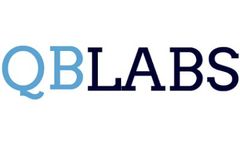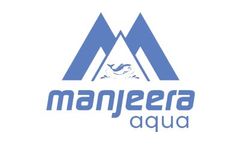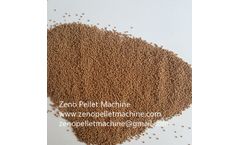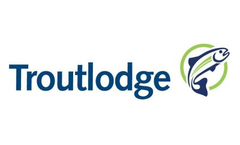aquaculture species Articles
-
Aquaculture in the Philippines: The Top 10 Diseases Shrimp Farmers Should Be Aware Of
Shrimp are one of the most popular aquaculture species in the Philippines. Shrimp farming can be highly profitable, with higher harvest rates and relatively low production costs compared to other species when standardized, sustainable aquaculture approaches are followed. Disease outbreaks over the last two decades, however, have led to dramatic declines in the shrimp output and challenges for ...
By QB Labs, LLC
-
Effects of different management regimes on mangrove ecosystem services in Java, Indonesia
This new report, published by Wageningen University and Wetlands International, seeks to fill a significant gap in mangrove ecosystem service estimates. While several studies have sought to measure and value the ecosystem services provided by mangrove ecosystems in general, this new piece of research has for the first time conducted separate evaluations for zones that are characterised by ...
-
Bio Films in Recirculating Aquaculture system
A biofilm is an assemblage of microbial cells that’s irreversibly related to a floor and enclosed in a matrix of normally polysaccharide material. It can also additionally shape on a extensive kind of surfaces, along with residing tissues, scientific devices, commercial or potable water device pipe or herbal aquatic systems. A well-assorted organism inclusive of algae, micro organism, ...
-
Future Brief: Sustainable Aquaculture
Is sustainable aquaculture possible? Aquaculture is facing a new era of expansion in Europe. What are the environmental implications of this, and how can the sector expand sustainably? This Future Brief from Science for Environment Policy presents an overview of research into aquaculture’s impacts, and considers how it could develop in harmony with environmental goals. The EU’s Blue ...
-
What Types Of Fish You Can Farm in Nigeria
Fish farming a profitable business in Nigeria, let’s now proceed to decide which specie of fish we want to farm. Below are some of the most popular fish species that is suitable for Aquaculture. 1. Catfish Even though Catfish is not the most popular fish in Nigeria, this fish species is by far the most cultivated in Nigeria. One thing good about catfish is that it is one of the easiest fish ...
-
Probiotics in Aquaculture
Aquaculture is an essential and emerging food-producing sector in the world. The fishery yearbook 2017 states that 153 million tons of total fish production used for human consumption. But the production is always hindered by disease and environmental situations. These conditions result in severe financial losses for the companies. However, the use of antibiotics in aquaculture causes the ...
-
The advantages and disadvantages of culturing fish.
The advantages and disadvantages of culturing fish. Experts develop practical recommendations for decision-makers, scientists and producers for a sustainable development of Mediterranean aquaculture. Human demand for fish is growing steadily. With fisheries decreasing worldwide, aquaculture is becoming an important socio-economic alternative and a source of proteins and healthy oils. ...
-
Fishing for a Solution
As writer Rowan Jacobsen explores in our recent feature “Has Meat Met Its Match?,” animal agriculture’s hefty environmental footprint is creating interest in exploring ways to meet humans’ growing appetite for animal protein that extend beyond beef, chicken and pork. In some places, that exploration is going underwater. Aquaculture, or fish farming, is the fastest growing ...
By Ensia
-
Salmon aquaculture could incorporate seaweed and sea urchins to reduce nitrogen enrichment
Farming fish together with seaweed and other species could help improve the sustainability of aquaculture and reduce pollution. A new study provides a tool for designing sustainable fish farming systems and calculates their potential to recycle waste. An example of a salmon farming system incorporating seaweed and sea urchins could reduce nitrogen releases to the environment by 45%. Over half of ...
-
How to make fish feed pellet
Manufactured feeds is produced by feed pellet machine ,which is an important part of modern commercial aquaculture, providing the balanced nutrition needed by farmed fish. The feeds, in the form of granules or pellets, provide the nutrition in a stable and concentrated form, enabling the fish to feed efficiently and grow to their full potential. The nutritional content of feed pellet can not ...
-
Polyurethane Pond Liner for Aquaculture Farm Projects in Philippines
Polyurethane pond liner is the kind of low permeable synthetic membrane liner and cost effective geotechnical engineering material which are widely used for water containment, aquaculture farm anti seepage lining applications. Polyurethane pond liner is made of finest quality high density polyurethane with specially formulated, virgin polyethylene resin, combined with specified quantity ...
-
Rising Meat Consumption Takes Big Bite out of Grain Harvest
http://www.earth-policy.org/data_highlights/2011/highlights22 World consumption of animal protein is everywhere on the rise. Meat consumption increased from 44 million tons in 1950 to 284 million tons in 2009, more than doubling annual consumption per person to over 90 pounds. The rise in consumption of milk and eggs is equally dramatic. Wherever incomes rise, so does meat consumption. As the ...
-
Recirculatory Aquaculture System (RAS)
Introduction: Recirculation Aquaculture System (RAS) is a generation in which water is recycled and reused after filtration and elimination of suspended rely and metabolites. The approach is used for highdensity lifestyle of diverse species of fish utilising minimal land place and water. It is an in depth approach (better densities and greater rigorous management) than different aquaculture ...
-
Enhanced resistance to BCWD in Troutlodge strains
Joint research of the United States Department of Agriculture (USDA) and Troutlodge has shown that Genomic Selection can double the prediction accuracy for Bacterial Cold Water Disease (BCWD). Application of Genomic Selection for BCWD resistance to three generations of Troutlodge broodstock resulted in a challenge survival increasing from 33.5% in 2015 to 78.3% in 2019. This is a staggering ...
Need help finding the right suppliers? Try XPRT Sourcing. Let the XPRTs do the work for you





